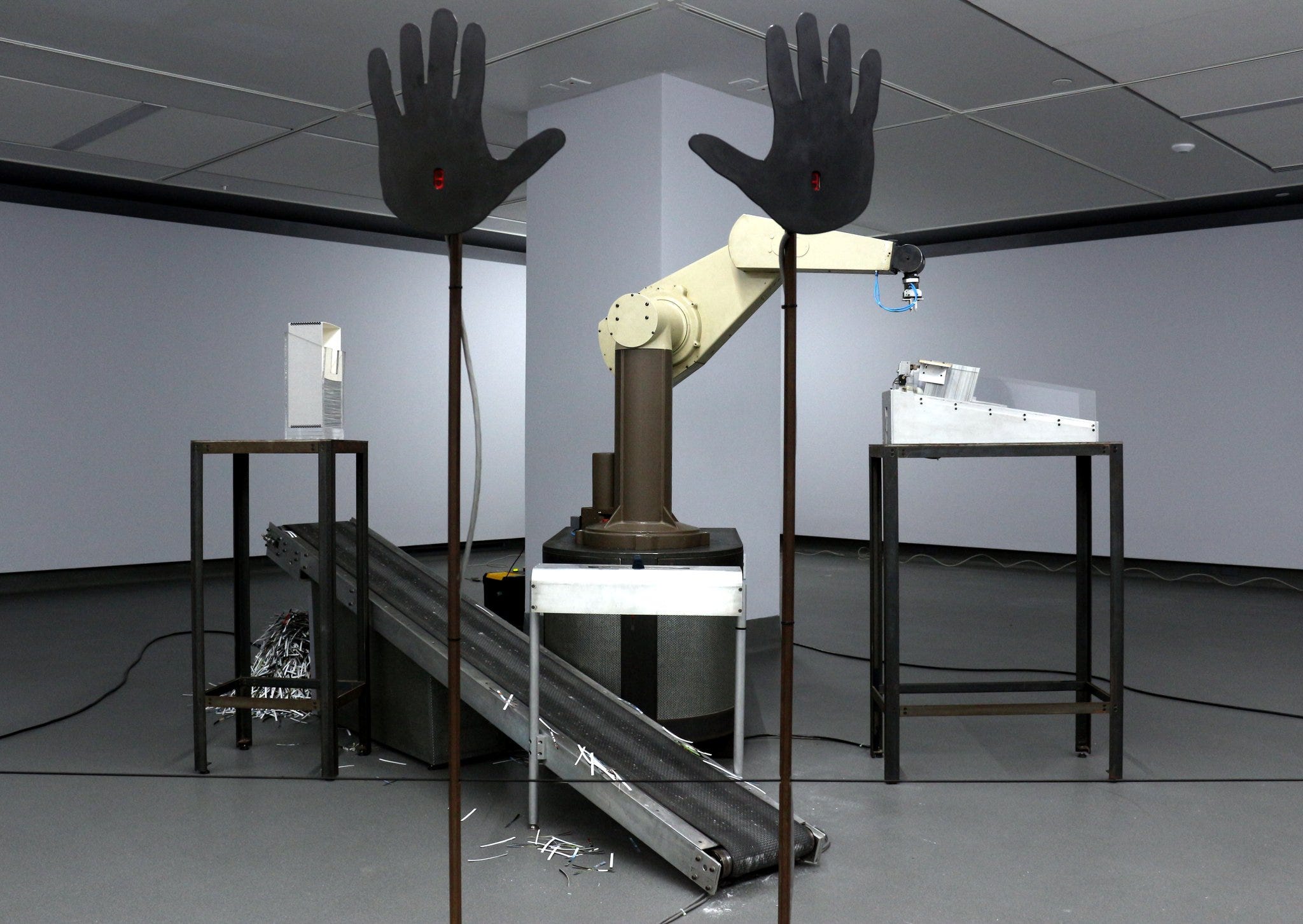Cybernetics 101
Visited the Ryerson Image Centre once again - again a wonderful (totally free) show. You're going soon, right? As previously mentioned, there are four different display areas (sometimes five) all of which have been used well, every time we've gone. (And they're such photography super-keeners, you can't leave uninspired)
This installation was set up in the small gallery to the side, which they usually reserve for something very impactful (MLK Birmingham photos, last time) and though this piece may seem quite inhuman, it's hugely telling all the same.
I keep mentioning Norbert Wiener's "The human use of human beings - Cybernetics and Society" - but I'd bet money I still haven't persuaded any of my friends to actually read it - you don't have to do the fat (heavy calculus) version - I can't follow all that math either - but you don't need to - the slim popular science version is itself as important as Machiavelli, if you want to understand modern governance.
Much like quantum physics broke from the idea of precise control, prediction and determination. and understood that statistical averages provided models with distinctly useful properties unto themselves, the cybernetic feedback model breaks sharply with simpler paradigms, but not only illuminates many biological processes (always exciting) but fits-in with social phenomena in ways where more linear ideas simply fail.
What's the main point about cybernetics that you DO know? Feedback!
In systems, feedback is everything - and when more than one part relates to another with feedback, all sorts of curious things can happen as a result. Flocking in birds and schooling in fish, can both be modelled with very simple rules and feedback - and yet seem to spontaneously organize huge complex and highly responsive cohesive systems.
Feedback in electronic and mechanical systems is something we think about too little nowadays, considering how much more we rely on it, than ever before.
This artist, the Torontonian, Max Dean, has here come up with a beautiful way to artistically convey a lot about our relationship to machines, including one of the cybernetics concepts that nanotech geeks especially love to discuss - the infamous "Grey-goo". Which is the punchline to a whole bunch of questions along the lines of - "What if we accidentally make our machines dissolve some essential material, and we let them loose, and then we can't stop them?"
The machine is comparatively low-tech, but totally horrifying all the same. That robot arm reaches into a nice big stack of photographs, and then it holds one up and turns it around, just in case anyone is there to see it.
If you do see it, and you like the photo - all you have to do is touch one of the hands and the robot will save it in a nice neat pile, off to the side. But if you don't react within a few seconds, it drops the photograph into a paper-shredder, and the pieces are whisked-away by the conveyor belt, into a huge pile of garbage.
The photos aren't lousy, either - they are sentimental, artistic, almost all beautiful and non-repeating. But the machine has no more morality than your attention confers, and will, without your participation, never stop destroying art and memory.
And just in case I didn't already love this artist plenty, just for making this piece - the curator pointed out that he always puts a tiny model of himself into every installation and exhibition he puts on - just to keep an eye on the crowd.
Yup - my sort of of crazy for sure! (Like a Fawkes!)
¯\_(ツ)_/¯





